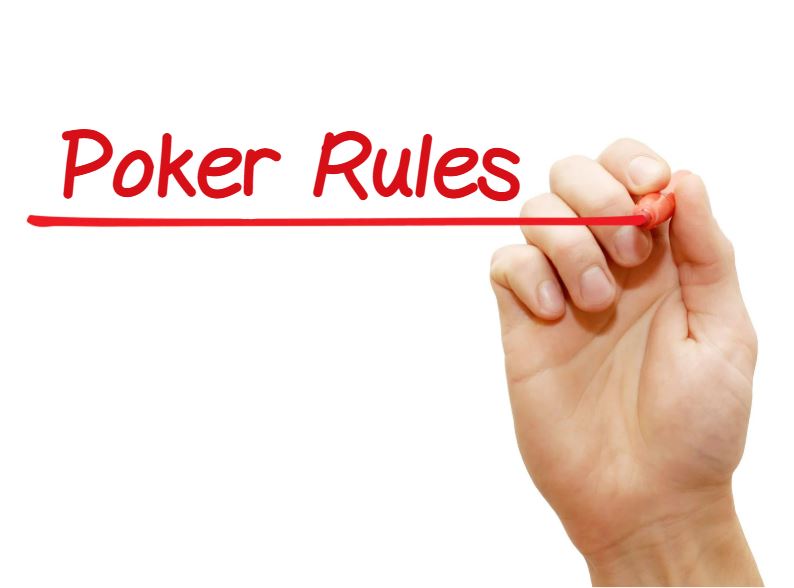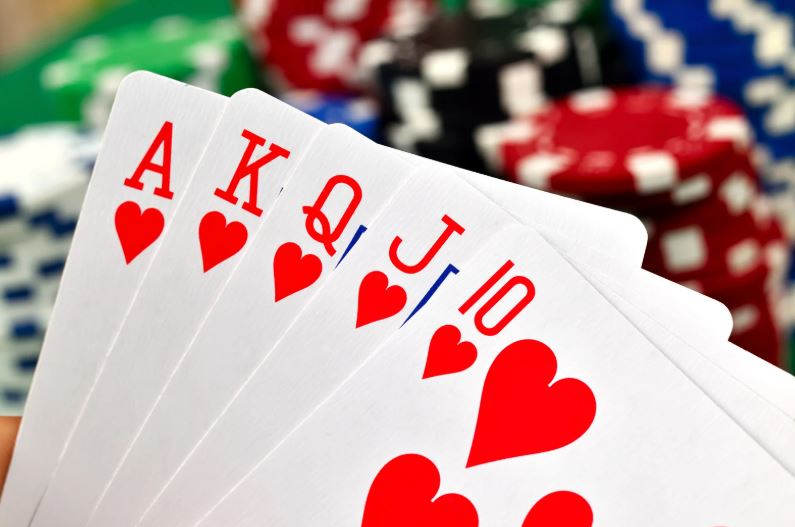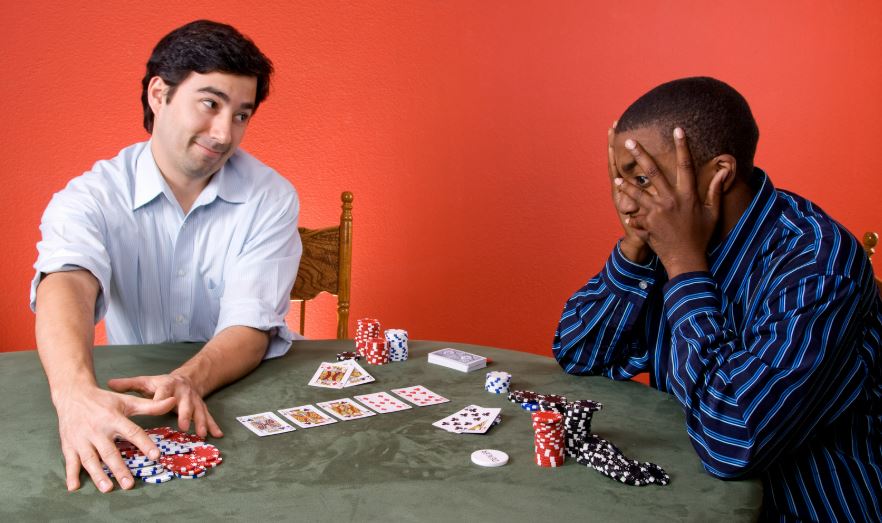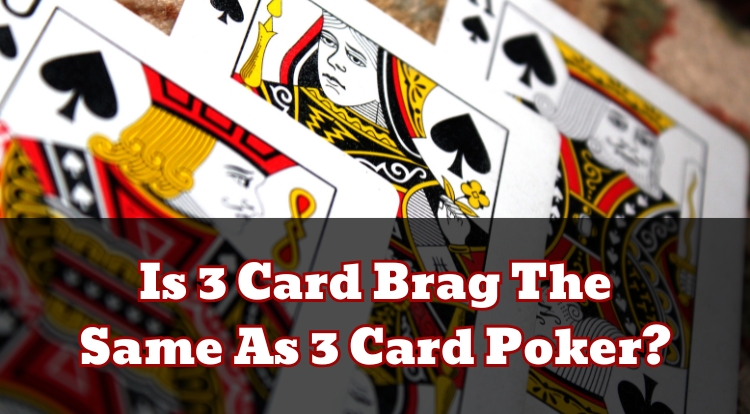How to Play Poker: Learn Poker Rules, Hands & Beginner Tips
Poker is one of the most recognised card games, played in clubs and casinos across the UK. But for those just getting started, the basics could seem a bit confusing at first. Whether you’re planning to enjoy a friendly game with mates or explore the online casino world, understanding how poker works is the first step.
This article is designed to help complete beginners get to grips with the essentials of poker. You’ll discover how a typical game flows, get to know the different hands, and pick up some straightforward tips that suit any skill level. Keep reading to learn more.
What Is Poker?

Poker is a card game played with a standard 52-card deck. Players take turns making bets based on the cards they are dealt. The aim is to hold the best five-card hand at showdown or to persuade opponents to fold before then.
There are many versions, with Texas Hold’em and Omaha the most common. Each has its own method for dealing cards, placing bets, and forming hands, but the basic idea of comparing five-card combinations runs through them all.
Unlike many other casino games, players usually compete against each other rather than the house. Poker can be played at physical tables or online, with options ranging from smaller stakes to higher buy-ins, and formats that suit quick sessions or longer play.
Players should always remember to gamble responsibly and within their means- never wager more than you can afford to lose.
How Do Poker Games Work?
A hand begins with shuffled cards, then moves through betting rounds where players can fold, call, or raise. Chips stand in for pounds, and tables set minimum and maximum stakes in advance so everyone knows the limits.
Most tables use blinds or antes to seed the pot. In Hold’em, each player receives two private cards, and five community cards are revealed in stages known as the flop, turn, and river. Your best five-card hand can use any mix of your private cards and the shared ones. Other variants change how many cards you hold, how many are shared, and which you must use.
Betting structures also vary. No-limit games allow any raise size up to the chips in front of you, pot-limit caps raises to the current pot size, and fixed-limit uses set increments. These structures affect how hands play out, so the same cards can lead to very different decisions depending on the format.
Cash games let you join and leave with chips worth real money, while tournaments use buy-ins that convert to a stack, with prizes based on finishing positions. Online lobbies usually show table limits, structure, and prize details before you sit down. Once a betting round ends and no further actions remain, players who have not folded compare hands to decide the winner.
Poker Rules Explained

Across most versions, the flow is consistent. Blinds or antes are posted, players receive cards, and action proceeds clockwise. On your turn, you may fold, call the current bet, check if no bet is facing you, or raise. Betting continues until all active players have matched the last bet or folded.
When betting is complete, any remaining players reveal their hands at the showdown. Standard hand rankings decide the winner, and ties are resolved using kickers where relevant. Suits do not have a rank in most forms of poker, so a flush of hearts and a flush of spades are equal except for card values.
Two additional rules are potentially worth knowing early on. Side pots occur when one or more players are all-in for different amounts, creating separate pots that only certain players can win. Also, table rules can set decision timers online and define minimum buy-ins or re-buy conditions. A quick look at the table info before joining might help avoid surprises, especially if you’re moving between formats.
Poker Hand Rankings in Order
Poker hands are ranked according to specific card combinations. Understanding these rankings is important for working out which hand is strongest at the end of each round. The following list shows poker hands from highest to lowest value:
Royal Flush: Five cards in sequence from ten to ace, all of the same suit. This is the highest-ranking hand.
Straight Flush: Five consecutive cards of the same suit, such as 6, 7, 8, 9, 10 of hearts.
Four of a Kind: Four cards of the same value, such as four jacks and any other card.
Full House: Three cards of one number and two cards of another number, for example three 4s and two 8s.
Flush: Five cards of the same suit, not in sequence.
Straight: Five cards in sequence, not all the same suit. A can count as high or low in a straight, so A, 2, 3, 4, 5 is valid.
Three of a Kind: Three cards with the same value and two unrelated cards.
Two Pair: Two cards of one number, two cards of another number, plus one extra card.
One Pair: Two cards of the same value, plus three other unrelated cards.
High Card: If no other hand is made, the player’s highest card counts.
If two hands share the same category, the values within the five-card hand decide the winner. For example, a pair of queens beats a pair of jacks, and if pairs match, the highest side card, called the kicker, settles it. Most games use these standard rankings, though niche variants may tweak them.
Strongest Poker Hands

Poker hands are made up of five cards, and some combinations are rare but very powerful. A royal flush sits at the top: ace, king, queen, jack, and ten of the same suit. The odds of being dealt one in a five-card deal are very low, about 1 in 650,000, which is why it is rarely seen.
Just below is the straight flush, any five cards in a row from the same suit, such as 5 to 9 of diamonds. Four of a kind follows, where all four cards of a rank are present, supported by any fifth card. These hands are strong because they leave very few ways for opponents to beat them once the board is fully revealed.
Next is the full house, combining three of a kind with a pair. After that come flushes and straights. Both win often, but they can be overtaken by higher versions of themselves, so a queen-high flush loses to a king-high flush. Recognising the relative strength of these hands against what the board allows will help you judge when a hand is likely to be best by the river.
Weakest Poker Hands
At the other end sits high card, where the five cards do not form a pair, straight, or flush. An ace-high with mixed suits, such as A, 9, 7, 5, 3, is a common example. It can win if everyone else also has nothing better, but it often trails even a simple pair.
One pair is the next step up and appears frequently. A single pair with weak side cards can be overtaken by the same pair with stronger kickers, so A, A, 9, 7, 2 beats A, A, 8, 6, 5. Unconnected, off-suit cards are often called rag hands and usually need significant help from the board to improve.
Different variants may rate low hands differently, especially in games designed to reward the lowest combination. In standard high-hand games, though, these weaker shapes appear most often and are outclassed by the made hands listed earlier.
Play Slots & Online Casino Games
How to Play Poker Step by Step
A standard game brings two or more players to the table with chips, a dealer button to mark position, and blinds or antes to get the pot started. The dealer role moves clockwise after each hand so everyone eventually acts from every seat.
In Texas Hold’em, each player receives two private cards, followed by betting. Three community cards arrive together on the flop, then a single card on the turn, and another on the river, with betting after each reveal. Players make their best five-card hand from any mix of their two private cards and the five on the table. Other variants change how many cards you hold or must use, but the rhythm of deal, bet, reveal, and showdown is shared across formats.
Online tables automate the deal and handle pots and side pots for you. Decision timers keep the game moving, and table information shows buy-ins, limits, and structure. A quick scan before you join might help you pick a game that fits your plans and budget.
What Are the Different Types of Poker?
Poker comes in several forms, each with its own rules and style of play. Some are seen almost everywhere, while others appear in specific rooms or at certain stakes.
Texas Hold’em is the most popular type. Players are dealt two private cards and use five shared cards to make their best hand. It works well as both a cash game and a tournament format.
Omaha is another favourite. Each player receives four private cards and must use exactly two, along with three shared cards, to create a hand. It is commonly played as pot-limit, which can create larger pots because more starting hands connect with the board.
Seven-Card Stud deals a mix of face-up and face-down cards to each player, with no shared community cards. It rewards careful observation, as you can see part of your opponents’ holdings.
Other variations include Five-Card Draw, where players can replace some cards after the first betting round, and Razz, which focuses on making the lowest possible five-card hand. Online platforms may also offer faster tables or special formats created for digital play. Rules summaries in the lobby usually outline the key differences so you can settle on a version that suits your preferences.
Beginner Poker Tips for New Players
Start by learning the hand rankings until they are second nature. Knowing what beats what keeps decisions simpler when action gets busy.
Read the rules for the version you are playing. Small differences, such as whether a game is no-limit or pot-limit, change the value of certain decisions.
Pay attention to starting hands. Some combinations improve more often than others, and folding weak shapes before the flop in Hold’em is a normal part of staying disciplined.
Watch how others behave. Bet sizes, timing, and patterns can hint at strength or uncertainty, though they are never definitive.
It could be a good idea to check the help section for details about limits, antes or blinds, and any table-specific rules.
Common Mistakes to Avoid in Poker

Playing too many hands is the classic beginner error. Entering pots with weak cards adds up over time and leaves you facing difficult decisions after the flop.
Focusing only on your own cards can be costly. The board often hints at what opponents could hold, like a possible straight or flush, so factor that into your judgement.
Betting without purpose gives away information or misses value. Very small bets may invite calls when you want folds, while oversized bets can scare away action when you are strong.
Position matters. Acting later in the round lets you see more information before committing chips, so treating early and late positions the same can lead to avoidable mistakes.
Not checking table limits or structure before you start is another common slip. A pot-limit game plays differently from no-limit, and tournament blind levels create pressure as stacks shrink.
Long sessions without breaks lead to tired choices. Short pauses might help you stick to your plan and keep decisions consistent.
Each of these mistakes is common among new players, but a little awareness goes a long way toward avoiding them.
Poker Glossary of Key Terms
Understanding a few core terms makes the rest of the game much clearer. Here are the words you will see and hear most often at the table.
Ante: A small, required bet that all players put in before a hand begins. Not used in every version of poker.
Big Blind: The larger of two forced bets posted before cards are dealt. It helps start the betting.
Bluff: Making a bet or raise with a weak hand, hoping opponents will fold better hands.
Button: A disc that marks the dealer position. It moves clockwise around the table after every hand.
Call: Matching the current bet made by another player in the same round.
Check: Choosing not to make a bet when no one else has yet bet in the round. This keeps you in the hand without adding chips.
Community Cards: Cards dealt face up in the centre of the table, shared by all players to make their best hand, common in Texas Hold’em and Omaha.
Fold: Deciding not to continue in the current hand and giving up any chips you have placed in the pot.
Pot: The total amount of chips or money bet in a hand, awarded to the winning player.
Raise: Increasing the size of the current bet during a betting round.
Small Blind: The smaller of two forced bets posted before the cards are dealt.
Showdown: The stage when remaining players reveal their cards to determine the winner.
Online rooms or specific games may use slightly different terms, so the help or rules section could be a useful place to check anything unfamiliar. Always remember to gamble responsibly and within your means.
**The information provided in this blog is intended for educational purposes and should not be construed as betting advice or a guarantee of success. Always gamble responsibly.
*All values (Bet Levels, Maximum Wins etc.) mentioned in relation to these games are subject to change at any time. Game features mentioned may not be available in some jurisdictions.
































































